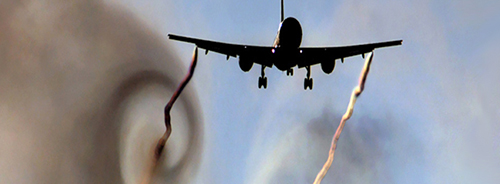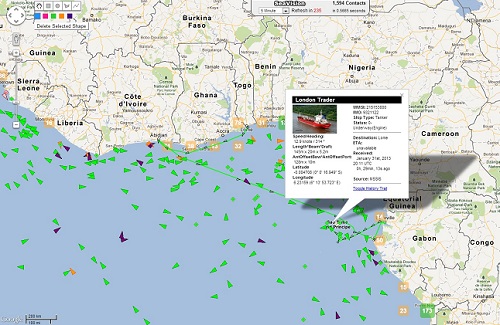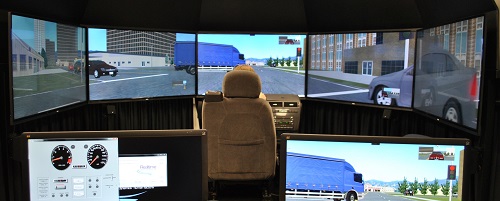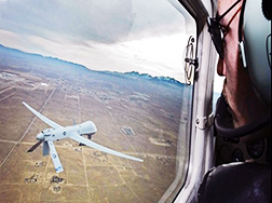The Volpe Center is DOT’s ‘Nerd Lab’—and Much More
By Volpe Director Anne Aylward
Connected vehicles. Unmanned aircraft. Worldwide vessel tracking.
The U.S. DOT Volpe National Transportation Systems Center is where transportation agencies and the private sector turn for multimodal expertise on the cutting edge of what’s next in transportation.
Politico recently featured the Volpe Center in its tour of government nerd labs, alongside the Defense Advanced Research Projects Agency, the High-Risk High-Reward Research Program from the National Institutes of Health, the U.S. Department of Agriculture’s Agricultural Research Service, and others.
The Volpe Center brings together world experts in Infrastructure Systems, Safety Management and Human Factors, Air Traffic Systems, and Policy and Planning, all under one roof. Each of our projects is distinctly funded, and we do our work on behalf of public and private sponsors.
“I came here with a background in vision science, to help with displays in aircraft,” said Volpe psychologist Scott Gabree. “Within my first three years, I started working on safety technology at rail crossings and the psychology of people who die on the rail system. I feel like anytime I have a question, I’m a maximum of two floors away from an expert in a world I didn’t even know existed. That’s what’s so cool about Volpe.”
Across modes, Volpe’s nerds—a term of endearment at our headquarters in the Cambridge, Massachusetts, Kendall Square tech hub—have built systems that work behind the scenes to improve transportation safety and efficiency around the world.

A jetliner leaving behind distinct wake vortices during a wake turbulence test. (Volpe photo)
“In the Aircraft Wakes and Weather Division here at Volpe, we nerd-out about a lot of things, including how the air trailing a moving aircraft affects other aircraft,” said Volpe Division Chief Jonathan Lee. “We get deep into this stuff because it’s important for safety—wake turbulence can cause pilots of smaller aircraft to lose control. Everyone at Volpe, to some degree, is a safety nerd and helps to enhance safety across the transportation system.”
For improving safety on oceans and waterways, there’s SeaVision, a web-based vessel-tracking application Volpe developed for the U.S. Navy that’s been used to combat illegal fishing and smuggling.

SeaVision leverages Google Maps to display more than 62,000 ships around the world and their corresponding information, including a ship's position, course, and speed, as well as the name and size of a vessel. (Volpe image)
Our experts have also been at the fore of investigating and championing the effectiveness of truck side guards, which can save the lives of bicyclists and pedestrians during truck collisions.
There’s the ground-based sense-and-avoid technology we developed for the U.S. Air Force, which alerts unmanned aircraft operators to potential conflicts with neighboring aircraft and recommends avoidance maneuvers if needed.
We have investigations into the safety impact of following distances between heavy trucks in automated platoons performed on behalf of the Federal Highway Administration, and we work to improve pilot communication on behalf of the Federal Aviation Administration.
This is just a small sampling, and I didn’t even mention our suite of airplane, train, and car simulators.

The custom-built driving simulator at the Volpe Center features five 55-inch screens that wrap 180 degrees around users, providing a wide field of view that closely emulates a real-car experience. (Volpe photo)
In short, the nerds at Volpe have their minds churning across the transportation enterprise to make sure people and goods get where they need to go as safely and efficiently as possible.
“My background is in linguistics and cognitive psychology, which I apply to the aviation world, and what’s great is that I’m able to learn about very different areas within aviation,” said Volpe human factors expert Tracy Lennertz. “I’m doing mostly research and development, cutting-edge work that is going to shape national and international aviation standards. To know my work is having that kind of global impact is pretty neat.”
The Volpe Center is an agency of the U.S. Department of Transportation that works with the public and private sectors on solutions to our nation’s most pressing transportation challenges. Learn more about how your agency or organization can work with Volpe.

Volpe developed a ground-based sense-and-avoid technology for the U.S. Air Force, which alerts unmanned aircraft operators to potential conflicts with neighboring aircraft and recommends avoidance maneuvers if needed. (Volpe photo)
This story first appeared in U.S. DOT’s Connections blog.
